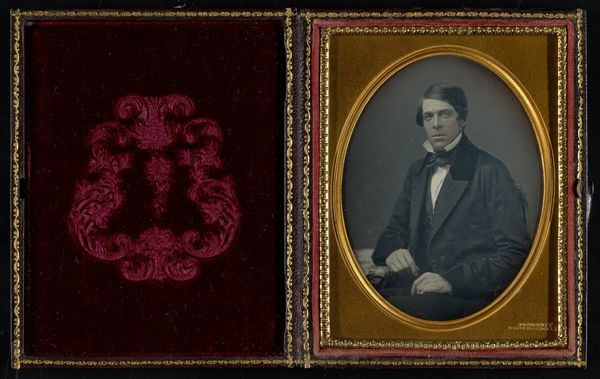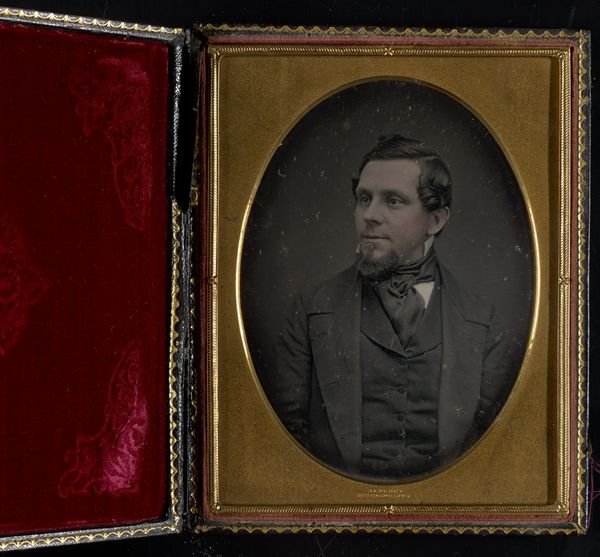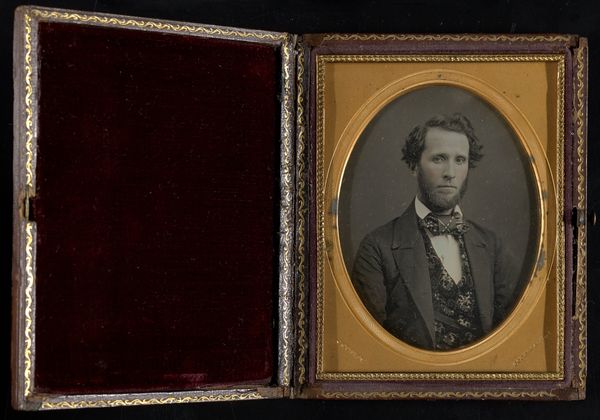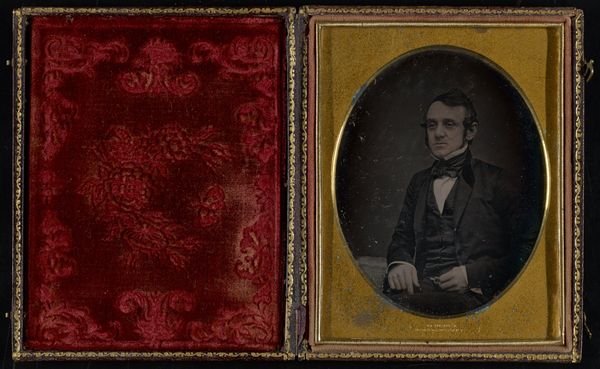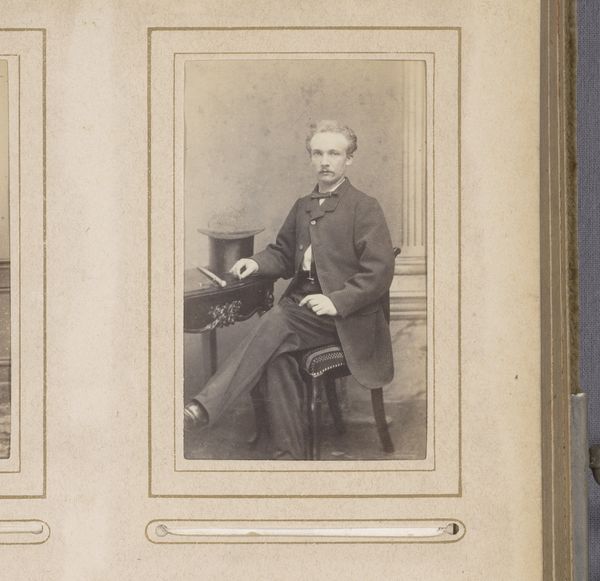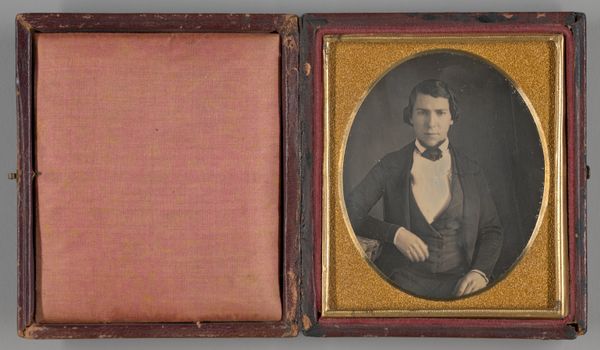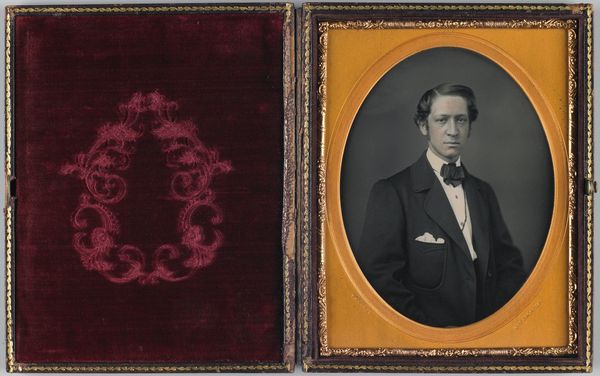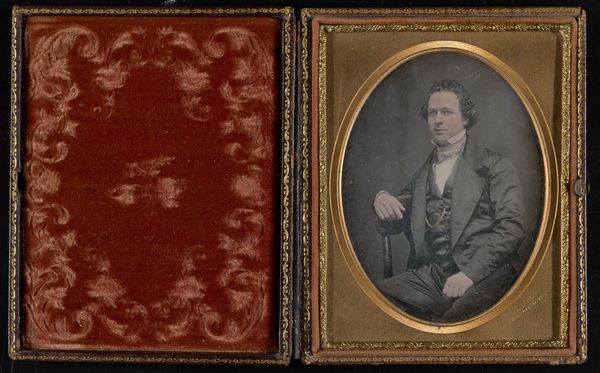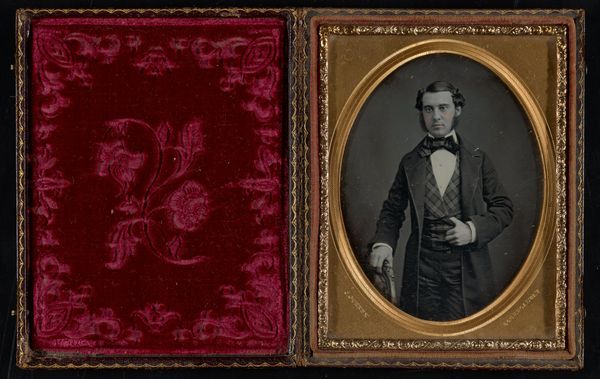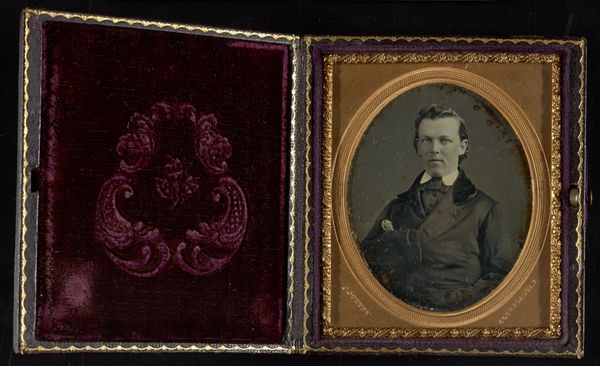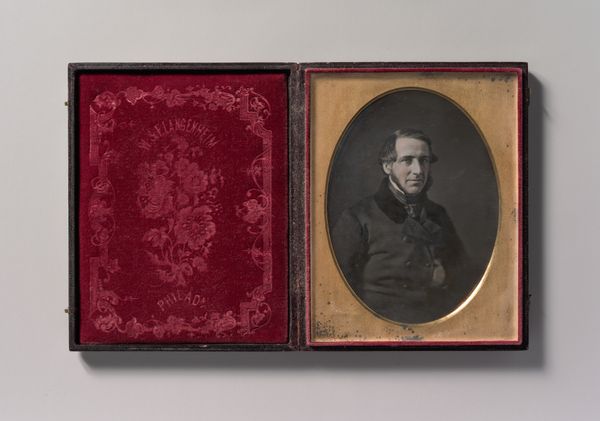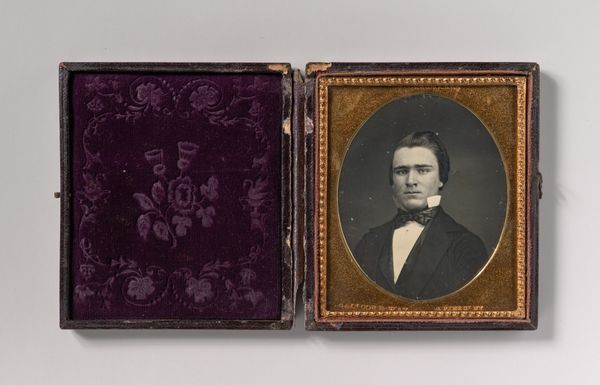![Untitled [portrait of a young boy] by Jeremiah Gurney](/_next/image?url=https%3A%2F%2Fd2w8kbdekdi1gv.cloudfront.net%2FeyJidWNrZXQiOiAiYXJ0ZXJhLWltYWdlcy1idWNrZXQiLCAia2V5IjogImFydHdvcmtzLzU3MmE0NTM0LTg0OGUtNGI1NC1iOWRjLTllNzRlOGQ3OTFjYy81NzJhNDUzNC04NDhlLTRiNTQtYjlkYy05ZTc0ZThkNzkxY2NfZnVsbC5qcGciLCAiZWRpdHMiOiB7InJlc2l6ZSI6IHsid2lkdGgiOiAxOTIwLCAiaGVpZ2h0IjogMTkyMCwgImZpdCI6ICJpbnNpZGUifX19&w=3840&q=75)
Dimensions: 3 1/4 x 2 3/4 in. (8.26 x 6.99 cm) (image)3 5/8 x 3 3/16 x 3/4 in. (9.21 x 8.1 x 1.91 cm) (mount)
Copyright: Public Domain
Curator: Isn’t this striking? A daguerreotype from around 1858-1869, attributed to Jeremiah Gurney, held here at the Minneapolis Institute of Art. It’s titled “Untitled [portrait of a young boy].” Editor: Absolutely. There’s something melancholy about him, isn’t there? A quiet seriousness. The tones, that steely grey... It’s like he’s seen too much already. Curator: Well, photography at this stage was an undertaking, especially for children. The long exposure times meant stillness was key; a playful mood was probably out of the question! What interests me is the democratizing aspect—portraiture became accessible to a wider segment of the population, and studios like Gurney's became vital social institutions. Editor: A vital social institution that froze moments in time, forcing them into these very formal boxes, both literally and figuratively! But there's also an intimacy here, you know? The small scale… the ornate case… It's meant to be held close, treasured, a private memento. The contrast with the solemn boy and the elaborate presentation almost hurts, somehow. Curator: Precisely! The presentation amplified the sitter's perceived importance. Middle-class families wanted these objects to perform status. Look at the gold trim, the plush velvet of the case… signifiers of wealth, taste, respectability. This portrait serves a purpose beyond mere likeness. It proclaims the family's place in society. Editor: And traps the boy in it! Though you do have to wonder about that gaze… slightly defiant, a little bit… knowing? It complicates the whole image, doesn't it? Is he embracing this performance, or resisting it, just a little bit? Curator: It leaves a wealth of possibilities for interpretation! These early photographs served not only as records but also as active participants in shaping social identities. The daguerreotype helped solidify societal ideals. Editor: Or quietly question them! Well, however you read it, it is definitely a beautiful testament to how humans play their part, both the obvious parts and all the hidden ones! Curator: Indeed! This image invites us to ponder the relationship between identity, representation, and social expectation in 19th-century America.
Comments
No comments
Be the first to comment and join the conversation on the ultimate creative platform.
